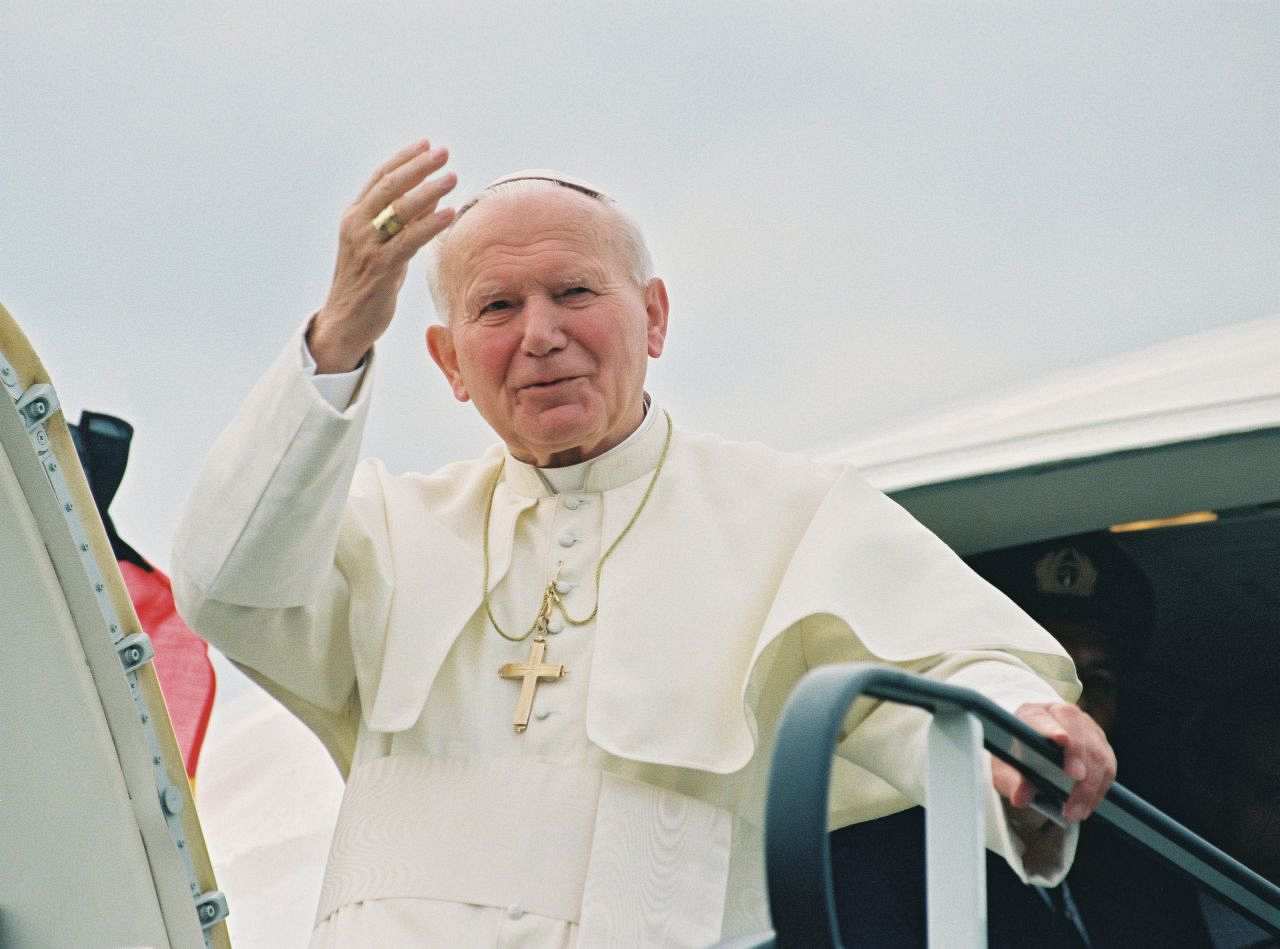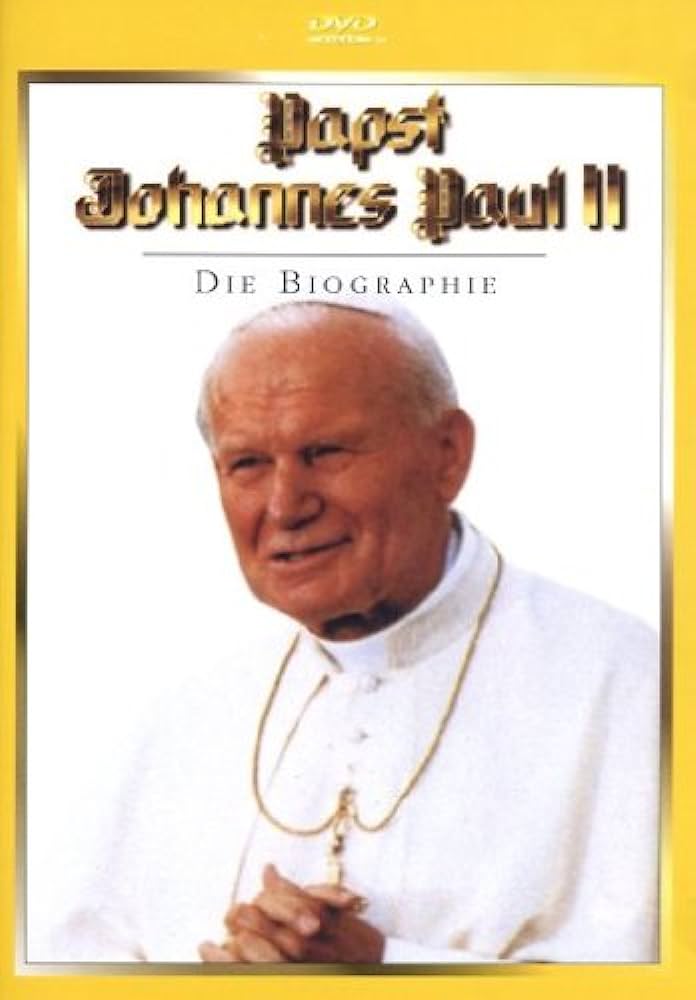Papst Johannes Paul II, geboren als Karol Józef Wojtyła am 18. Mai 1920 in Wadowice, Polen, war der 266. Papst der katholischen Kirche. Er regierte von 1978 bis 2005, als er im Alter von 84 Jahren starb. Er ist bekannt für seine Einmischung in die Weltpolitik und sein Engagement für die Verbreitung der christlichen Lehren und Werte. Seine Amtszeit war auch durch seine Reisen und Treffen mit vielen weltweiten Staatsoberhäuptern geprägt. Papst Johannes Paul II veränderte die Weltkirche durch seine Lehren und seinen Einsatz für soziale Gerechtigkeit und den Dialog zwischen den Religionen. Seine Biographie ist eine Geschichte des Einsatzes und des Engagements eines einzelnen Mannes, um die Kirche zu verbessern und die Welt zu einem besseren Ort zu machen.
Early Life and Education
Papst Johannes Paul II, born Karol Józef Wojtyła, had an extraordinary life, from his humble beginnings as a Polish laborer to becoming the first Slavic pope in the history of the Catholic Church. His early life and education played a significant role in his spiritual development and eventual rise to the highest rank of the Catholic Church.
Born on May 18, 1920 in Wadowice, Poland, Karol attended elementary school and then Jagiellonian University where he studied literature, philosophy, and sociology. In 1942, he joined an underground seminary and was ordained in 1946. After completing his doctoral dissertation on ethics, Karol was appointed auxiliary bishop of Krakow in 1958.
Karol’s papacy was marked by a commitment to social justice and human rights, and he used his position to speak out against both war and poverty. His travels brought him to many countries, including the United States, where he met with President Ronald Reagan. He also developed a special relationship with the youth of the world, encouraging them to become active in their faith.
The papacy of Pope John Paul II was a source of profound spiritual and social transformation for Catholics and non-Catholics alike. His dedication to the Church, his unwavering faith, and his commitment to justice will continue to be remembered for generations to come.
Priestly Ministry and Papal Election
Pope John Paul II was born Karol Józef Wojtyła in Wadowice, Poland on May 18, 1920. He was ordained a priest in 1946 and was appointed bishop of Krakow in 1958. During his service as a bishop, Karol Wojtyła was actively involved in the Second Vatican Council. He was appointed the first non-Italian Pope since 1523, when he was elected as Pope John Paul II in 1978.
John Paul II’s papacy marked a significant shift in the Catholic Church’s attitude towards modernity. He sought to engage with people of all backgrounds and faiths and to make the Church more open and tolerant. He traveled extensively to spread his message of religious tolerance and to build bridges between the Catholic Church and other denominations.
John Paul II was a vocal advocate of human rights, including the right to freedom of religion, and he fought against oppression and poverty. He was also a strong proponent of interfaith dialogue and was instrumental in the development of a more unified global Christian community. He was a prolific author and was one of the most influential figures in the history of the Catholic Church.
John Paul II died on April 2, 2005, after a long and illustrious papacy. He was beatified by Pope Benedict XVI in 2011 and was canonized in 2014. His legacy will continue to inspire Catholics and people of other faiths for generations to come.
Accomplishments as Pope
Pope John Paul II had a remarkable papacy, marked by numerous accomplishments. From his first papal address in 1978 to his death in 2005, he sought to spread a message of peace, justice, and reconciliation throughout the world. He also initiated a number of reforms and changes in the Catholic Church that had an immense effect on its structure and operations. During his papacy, he canonized more saints than any other pope in history and traveled extensively to promote the Church’s teachings. He was also a strong advocate for human rights and worked to bridge the divide between the Roman Catholic Church and other religions. He was a staunch defender of religious freedom, particularly in Communist nations, and was instrumental in the collapse of the Iron Curtain. He also held a number of ecumenical meetings with other Christian denominations, particularly the Orthodox Church, which resulted in the signing of several documents aimed at furthering unity and reconciliation. At the same time, he sought to strengthen the Church’s teachings on social and moral issues, including abortion, contraception, and euthanasia. Through his papacy, he sought to bring the world closer together and to ensure that the Church remained true to its mission.

World Travels and Interfaith Outreach
Pope John Paul II was a beloved and influential leader who had a profound impact on both the Catholic Church and the world at large. As Pope, he made extensive world travels, visiting 129 countries and countless cities, towns, and villages. He reached out to people of all faiths, cultures, and backgrounds, and was the first Pope to visit a synagogue and a mosque. He was also the first Pope to visit an Anglican church and a Buddhist temple. During his travels, he promoted interfaith dialogue and understanding, and worked to bring together people of all religions in peace and harmony. He also sought to bring the Catholic Church closer to other denominations, and to foster better understanding between both Catholics and non-Catholics. His extraordinary efforts to bring people of all faiths together remain an inspiration today.
Legacy and Death
Pope John Paul II was one of the most influential and beloved figures in recent history. His papacy spanned three decades and was marked by far-reaching reforms, a deep commitment to prayer and pastoral care, and a spirit of openness and reconciliation. His legacy continues to inspire people around the world.
John Paul II made a lasting impact on the Catholic Church, reforming doctrine, promoting interfaith dialogue, and championing human rights. He was a leader in the fight against poverty and injustice. He also had a deep interest in youth, particularly through his World Youth Day gatherings.
John Paul II died on April 2, 2005, at the age of 84. His death was marked by an outpouring of grief and admiration from people of all faiths. Millions of people from around the world attended his funeral, paying tribute to his legacy. His death was followed by a period of mourning and reflection, and his legacy continues to be celebrated today.
John Paul II was an extraordinary man who made a lasting impact on the world. His life and teachings continue to inspire people of all faiths and backgrounds. He will be remembered as a leader, theologian, and humble servant of the Lord.
Canonization Process
Pope John Paul II was one of the most influential religious figures of the 20th century. His life was marked by a long and remarkable career as pontiff that spanned a period of 27 years. One of the major accomplishments of his papacy was his work in initiating the process of canonization for many individuals, including himself. The process of canonization is a complex one, with several steps required before an individual can be declared a saint. This article will provide an in-depth analysis of the canonization process, how it works, and the significance of its role in the Catholic faith.
Canonization is the process of officially recognizing an individual as a saint of the Catholic Church. This process is overseen by the Congregation for the Causes of Saints, which is a branch of the Roman Curia. It begins with the investigation of the individual’s life and works, which is conducted by the Postulation Office. After the investigation is complete, the individual’s cause is taken up by the Congregation for the Causes of Saints, which reviews the evidence and makes a decision regarding the individual’s candidacy for canonization. If the individual is approved, the Pope then officially declares them to be a saint.
The process of canonization is an important part of the Catholic faith, as it is a way of recognizing and honoring individuals who exemplified the values and teachings of the Church. It is also a way of ensuring that the Church’s teachings remain consistent and relevant in the modern world. The canonization of Pope John Paul II is an example of how the Church honors individuals who have dedicated their lives to the service of others. His canonization is a reminder of the power of faith, and the importance of leading a life of service and compassion.
FAQs About the Papst Johannes Paul Ii Biographie
1. Was war Papst Johannes Paul IIs Geburtsname?
Karol Józef Wojtyła
2. Welche Orden hat Papst Johannes Paul II erhalten?
Er wurde mit dem Großkreuz des Eisernen Kreuzes, der Legion d’Honneur und dem Großkreuz des Ordens vom Heiligen Geist ausgezeichnet.
3. Welche wichtigen Änderungen hat Papst Johannes Paul II im katholischen Glauben vorgenommen?
Er hat die Dogmen der Jungfrauengeburt und der Unbefleckten Empfängnis erneuert und die katholische Lehre über die Ehe, die Familie und die Homosexualität erneuert. Er hat auch die katholische Akzeptanz der anderen Weltreligionen erhöht.
Conclusion
Pope John Paul II was one of the most influential figures of the 20th century. He had a long and distinguished career as a priest, bishop, and ultimately as Pope. His papacy was marked by a commitment to human dignity and social justice, as well as a strong emphasis on human rights. His spiritual and moral leadership was felt around the world, and his legacy continues to inspire people everywhere. His life is a remarkable example of faith, courage, and dedication to the Catholic Church and its mission.



